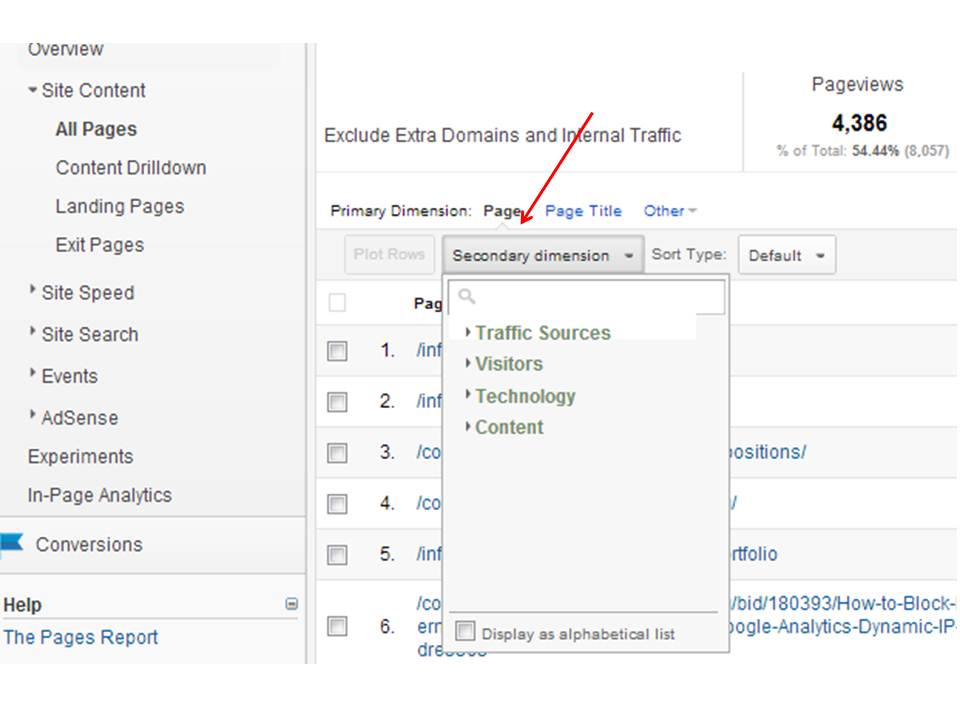Step-by-Step Guide: Leveraging Secondary Dimension in Google Analytics
Step-by-Step Guide: Leveraging Secondary Dimension in Google Analytics
Blog Article
Transform Your Analytics Strategy With Additional Dimension in Google Analytics
By incorporating second measurements right into information evaluation, a new layer of understandings arises, dropping light on elaborate individual habits and communications. The tactical application of additional measurements holds the crucial to opening a treasure trove of vital info that can reinvent just how companies analyze and act upon their data.
Recognizing Additional Measurements in Google Analytics
Secondary measurements in Google Analytics supply additional context to key information by permitting users to analyze metrics throughout a second measurement, offering deeper understandings into customer actions and interactions on a site. Secondary Dimension in Google Analytics. While key measurements supply basic information points such as pageviews, bounce price, and session duration, secondary dimensions offer a more thorough view by segmenting the key information additionally. This segmentation enables customers to examine metrics in mix with another dimension, such as web traffic resources, demographics, or individual behavior
Advantages of Using Secondary Dimensions
Making use of additional dimensions in Google Analytics supplies a strategic benefit by enhancing the depth of evaluation and supplying a more comprehensive understanding of individual communications and behavior on an internet site. By including additional measurements, experts can gain important understandings right into the performance of particular sections or variables within their data. This allows a more thorough exam of user actions past surface-level metrics, enabling a deeper expedition of the variables affecting individual engagement and conversions.

How to Implement Secondary Measurements
When integrating secondary dimensions in Google Analytics, one essential step is to pick the appropriate metrics and dimensions to enrich the evaluation process. Clicking on this button will open up a drop-down menu listing different measurements that can be included to your primary dimension for much deeper insights.
After picking the proper secondary dimension, such as 'Source/Medium' or 'Device Classification,' Google Analytics will certainly show the data in a more in-depth layout, enabling you to cross-analyze various aspects of individual habits. Bear in mind to explore different mixes of second and main dimensions to discover beneficial patterns and fads that can educate your marketing approaches. By applying additional dimensions thoughtfully, you can acquire an extra extensive understanding of your web site or application performance and make data-driven decisions to enhance your digital existence.
Analyzing Information With Second Measurements
Enhance your information evaluation in Google Analytics by including secondary measurements to delve deeper right into customer actions patterns and maximize your electronic marketing approaches efficiently - Secondary Dimension in Google Analytics. By adding second dimensions to your primary data, you can obtain useful insights that can assist you make notified choices regarding your web site or application performance
Analyzing data with additional dimensions allows you to section your key data further, providing a more detailed view of user communications. Incorporating the key dimension of 'source/medium' with a secondary dimension like 'touchdown page' can reveal which particular Learn More Here web pages are driving web traffic from different sources. This information can be critical in fine-tuning your content approach or maximizing your ad i loved this campaign to enhance conversions.
Furthermore, utilizing additional dimensions allows you to determine connections between different metrics, helping you comprehend the impact of numerous aspects on user behavior. Whether it's analyzing demographics together with user involvement metrics or tool categories with conversion prices, secondary dimensions empower you to uncover hidden trends and patterns that can guide your marketing efforts.
Optimizing Efficiency With Second Dimensions
To improve the performance of data analysis and decision-making in Google Analytics, including second dimensions is crucial to optimizing efficiency metrics and getting deeper insights into individual habits patterns. By using second dimensions, analysts can delve past surface-level information and uncover beneficial correlations that may or else go undetected. This optimization method allows businesses to customize their advertising initiatives better, recognize areas for enhancement in web site functionality, and improve general customer experience.
Additional measurements use a more detailed sight of individual communications by providing added context to key information metrics. As an example, matching the main dimension of 'landing web page' with an additional measurement like 'device classification' can reveal whether specific devices are most likely to drive engagement on particular landing web pages. This insight can educate responsive design enhancements or targeted advertising and marketing strategies to increase efficiency.

Final Thought
To conclude, the assimilation of second measurements in Google Analytics gives businesses with a powerful device to enhance their analytics method. Secondary Dimension in Google Analytics. By diving deeper into user habits and interactions, marketers can uncover useful understandings that can drive performance optimization and boost the overall customer experience. Leveraging additional measurements permits for a much more extensive analysis of data, causing more educated decision-making and tailored marketing initiatives
Secondary measurements in Google Analytics provide extra context to key information by enabling individuals to examine metrics throughout a 2nd measurement, providing deeper insights into individual behavior and interactions on a site. While key dimensions supply essential information factors such as pageviews, bounce rate, and session period, websites second measurements offer an even more in-depth sight by segmenting the key information better.One of the vital benefits of using secondary dimensions is the capability to reveal correlations and patterns that may not be instantly evident when assessing data with key measurements alone.When including secondary measurements in Google Analytics, one necessary action is to select the relevant metrics and measurements to improve the analysis procedure. Combining the main measurement of 'landing web page' with a secondary measurement like 'gadget group' can disclose whether particular devices are extra most likely to drive interaction on details touchdown web pages.
Report this page